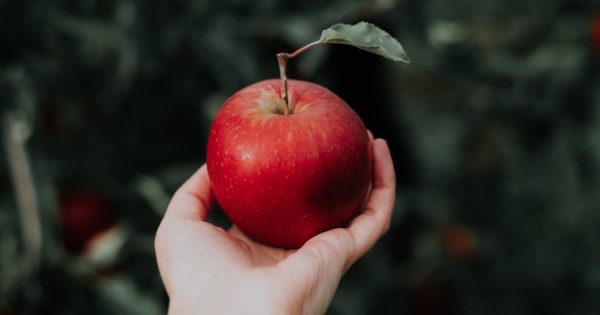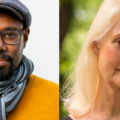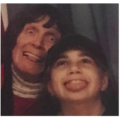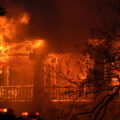On the Fairy Tales School of English-Language Poetry

“I’m seeking someone who remembers it
—Gabriela Mistral, “The Teller of Tales” (“La Contadora,” translated by Ursula K. Le Guin, 2003).
leaf by leaf, thread by thread.
I lend her my breath, I give her my legs,
so that hearing it may waken it for me.”
E. Catherine Tobler: “What is it that captivates you when it comes to myth and fairy tale?”
Erzebet Yellowboy: “The universal truths, the insights into human behavior, the magic. Mostly the magic.”
—Interview at ecatherine.com (2013)
“It’s the whole fairy tale ogre-ish trot of it, absolutely relentless and absolutely exhilarating.”
—Rita Dove, interviewed by Elizabeth Alexander (2005)
Fairy tales teach us how to accomplish seemingly impossible tasks. If you want to count all the beans in the sack before midnight, or make a rope out of ash, you must rely on your sharp wits and strong rhetorical skills, assume that animals can talk and humans can shift-shape, and make unlikely friends along the way. “You have to believe / That you have something impossible up your sleeve,” as A.E. Stallings writes. In a world where so many challenges feel impossible, from the rise of ethno-nationalist fascism to the existential threat of climate change, fairy tale poets provide a visionary path from despair to—if not hope, then to a kind of deeper wisdom, one that can only be found through the logic of magic and the truths of suppressed histories.
Poets reframing, repurposing, revising, and revisioning fairy tales and tropes from folk traditions are producing some of the most inventive and dynamic work in English-language poetry today. Over the past two decades, scores of fairy tale poets across the world have coalesced to form a loose movement that may be as important as The Beats, the Black Mountain poets, and the New York School, or as the poets affiliated with Cave Canem, Kundiman, or the Nuyorican Poets Café. Their poetry matters, speaking and listening as it does to a growing audience and expanding the appetite for poetry. They offer a vibrant and powerful response to turn-of-the-century cris de coeur, such as “Can Poetry Matter?” by Dana Gioia and “American Poetry in the New Century” by John Barr, the latter of whom called for American poetry to shake off its fatigue and stagnancy, so that “something new” could emerge from the “rain shadow thrown by Modernism.” Fairy tale poets are building new texts from rearranged, repurposed and repainted bricks, intermixed with tiles of their own devising, and sometimes re-situating the house altogether, thereby reinvigorating English-language poetry and poetics writ large.
Ed. Note: For those seeking specific citations and additional / scholarly references, please contact the author directly at rabuzzi.daniel@gmail.com; he will also be placing these at danielarabuzzi.com.
By “fairy tales,” I mean a wide variety of traditional wonder stories from all over the globe, including fables, animal tales, supernatural legends, and kindred species within the forest of folktale; story in the wild rarely conforms to strict classification. Most English-language fairy tale poets have used stories from Europe for their refashionings, that is, the Märchen, contes de fées, Jack-tales and equivalents widely known through the Brothers Grimm, Perrault, d’Aulnoy, Lang, Asbjørnsen & Moe, Basile, Pitrè, Afanasyev, Disney, and so on. This includes the “literary fairy tales” (Kunstmärchen) of, for instance, Goethe, Hoffmann, de la Motte Fouqué, Andersen, Wilde, Asturias, and Arguedas. However, to a significant extent and more rapidly over recent decades,, poets writing in English have begun to de-center the European tales and how they are told.
Niyi Osundare’s use of Yoruba poetic and folkloric forms is one example, Amitav Ghosh’s translation of the Bengali folk epic Bon Bibi Johuranama is another. Diasporic poets in particular are reshaping the English language, reinventing old poetic forms and breathing life into new ones, often yielding hybrid compositions that reverberate in multiple tongues and within multiple settings. We can expect to read more poets retelling in English the stories sung at Tamil vilpattu performances, Chinese tónghuà, Wolof léép, the cuentos populares from a hundred places, the tales woven by Arabic hakawati—the possibilities astound and delight. Relatedly, much of the most innovative and important work in fiction today draws on mythologies, legends, and folktales from among hundreds of different cultures in Africa, Asia, the Pacific, and the Americas.
I define “fairy tale poem” expansively, overlapping with the “myth-poem” as defined by Alicia Suskin Ostriker in her pathbreaking 1986 study Stealing The Language: The Emergence of Women’s Poetry in America. A fairy tale poem is one branch on the tree of speculative poetry, a lively field encompassing science fiction, fantasy, horror, the Gothic and the (New) Weird, and with its own sense of history and criticism (the Science Fiction & Fantasy Poetry Association was founded in 1978). The many poems that retell, subvert, fracture, interrogate or otherwise address a specific fairy tale clearly qualify: “Goldilocks and the Three Bears,” for instance in Harryette Mullens’ “European Folk Tale Variant” or “The Frog Prince” in Tara Bergin’s “Faithful Henry.” Some poems engage with several stories at once, as in Hayley Mitchell Haugen’s “What The Grimm Girl Looks Forward To.” Others deploy a particular fairy tale trope. I would include poems that deploy fairyland imagery to evoke a mood of the otherworldly, the uncanny, the enchanted, as well as poems that feature fairies, elves, witches, nixies, and their extended kin without attachment to a specific fairy tale.
Below my reader will find a bibliography of work by fairy tale poets in English over the past quarter-century. This list is modeled on Ostriker’s list of myth-poets and it builds on 1985’s Disenchantments: An Anthology of Modern Fairy Tale Poetry edited by Wolfgang Mieder and 2003’s The Poets’ Grimm: 20th Century Poems From Grimm Fairy Tales edited by Jeanne Marie Beaumont & Claudia Carlson. My list is also necessarily incomplete. It is also a complement to the sizable archives and tables of content at The Rhysling Awards & Anthologies (Science Fiction & Fantasy Poetry Association), The Journal of Mythic Arts, Goblin Fruit, Mythic Delirium, and Scheherezade’s Bequest. Even so, it reflects tremendous recent growth in English-language fairy tale retellings both in poetry and in prose—and a related upsurge in scholarly and critical analysis of the retellings.
There were certainly precursors to our current boom, but I would identify Anne Sexton’s 1972 collection Transformations (illustrated by Barbara Swan) as the launching point of the current movement within poetry. In 1979, Angela Carter’s The Bloody Chamber did the same for prose (followed shortly by influential fairy tale-inflected works by Margaret Atwood, A.S. Byatt, Jeanette Winterson, and Joyce Carol Oates). In 1993, Ellen Datlow and Terri Windling co-edited Snow White, Blood Red, the first of eleven influential anthologies of fairy tales retold that shaped the protocols for the juggernaut that has become fairy tale retellings in speculative fiction. Windling had founded The Endicott Studio for the Mythic Arts in 1987, and worked closely with Ellen Kushner, Delia Sherman, Jane Yolen, Midori Snyder and other leading creatives re-deploying fairy tale themes within modern poetry and prose. In 1998, Heidi Ann Heiner started the SurLaLune Fairy Tales site that today is the leading resource for librarians, teachers and parents, responding to and helping to drive the interest in retellings. In 2005, Kate Bernheimer founded Fairy Tale Review (with its iconic Kiki Smith recurring cover), which brings fairy tale poetry and prose to many readers who might otherwise not read fabulistic genres, and publishing a wide spectrum of writers including Lauren Groff, Gina Ochsner, Anna Maria Hong, Dan Beachy-Quick, Paula Bohince, and Kim Addonizio.
The poet and critic Theodora Goss, author of Voices from Fairyland: The Fantastical Poems of Mary Coleridge, Charlotte Mew, and Sylvia Townsend Warner (2008), points us towards a defining feature of fairy tale poets: that they engage closely with the authors who came before them and are aware of the age, transmission, and complexities of the traditions within which they work. Sonya Taaffe, another leading poet, stresses the importance (and difficulties) of tracing lineage, influence and mentorships in speculative poetry. She has however mapped some of the connections between generations of poets. Such investigation indicates how deeply fairy tale poets have read and how widely. Poets in speculative genres converse with Ovid and Apuleius, and the ancients’ latter-day interpreters; in Virgil’s words (as translated by David Ferry), their work is “song replying to song replying to song.”
History is at the heart of the endeavor. Poets dissecting fairy tales aim to rewrite how we tell the story, specifically to surface and celebrate the history of the oppressed and marginalized. They highlight the iniquities inherent in historical power relationships and in the narratives the powerful create about those relationships. To do so, they not only subvert and re-invent the content of fairy tales, they challenge accepted definitions of history itself. To do so, they re-imagine how language frames history and how language houses memory (but also how the unspoken may be the better bulwark of memory). To do so, they highlight the extent to which fairy tales represent, or can be used to represent, the histories the powerful have suppressed, distorted and denied about the powerless—they remind us that the wolf cannot blow down the house made of brick.
Fairy tale poets have long since crashed through the 19th- and 20th-century versions of the most popular tales, the Cinderellas, Snow Whites and Rapunzels sanitized by the Grimms and the Langs, and brought to a high gloss of domesticity by Disney. Poets at least since Sexton have drilled down to the brutal bedrock, to the unrefined ore, uncovering so as to confront the stark realities fairy tales tell about rape, ravenous bellies and gnashing teeth, servitude, maiming, murder, loss, abandonment, entrapment, and every sort of betrayal. As Stacey Balkun underscores in “Dear Darlings”:
We're a labyrinth but we're far from our center.
We are the forest; we are the flood.
You are ours now so forget
the words breath and wave.
We take no pity on you or any child lost
to this wasteland, any woman tossed
from a brighter garden. To us, there's no difference
between burnt and drowned.
Erin Rodoni likewise warns, in “On Being Out of the Woods”:
They don't tell you the woods are like the universe:
infinite, and expanding. There is no getting out.
You can only weave between the trees. […]
...to be woodbound is to be
bound to every risk. May the wolf howl only
in the distance, the rustling be but the waking
of owls in the gables of dusk.
Christina Sng’s “Forest Mother” promises vengeance:
I return to the roots,
The branches, the leaves, […]
No devastation from men
With their sticks and knives, […]
They will arrive with their guns and scythes,
Here we will wait
And eat them alive.
Another admonition (I could give many dozens more), this one from Hannah V. Warren’s “Guide for Transformational Bodies”:
Eat nothing. Then eat everything you can find.
Berries & leaves. Gnaw on the bones of dead
limbs. Count in ribcages & opossum teeth. Wrap
yourself up somewhere. A bricked house with
eight walls. The ballooned lungs of a beached
whale. The rotting insides of a forest. Safe but
wolves.
The poets are also reclaiming the heroines and heroes of the tales, sometimes re-imagining and re-centering the agency that later tellings have elided. In this, they operate within wider socio-literary movements propelled by anti-colonialist, anti-racist, eco-poetical, pro-labor and pro-feminist ideas, catalyzed by evolving concepts of gender and sexuality. Nikita Gill makes the stakes plain in “Take Back Your Fairytale”:
Await no princes to save you...
Meet each other in the womb
of your enchanted dreams,
Snow White and Sleeping Beauty.
Rely on no man to save you,
he will awaken you to a new prison...
...my resourceful girls,
find one another in the fog realm,
wake each other up instead.
Fairy tales offer an especially potent mix of tools to refute, repair and rebuild, not just a particular story but how we conceive of story itself. They can be what Anna Reading, in a related context, calls a “restitutional assemblage” for redefining the concept of narrative, anchoring collective memory and effecting inter-generational justice. On the one hand, the poet can assume among the audience a general knowledge of the basic plot-line, themes and characters. On the other hand, that knowledge can swiftly be turned on its head or against itself; the plots are skeletal (their bones easily rearranged), the themes unclothed desiderata, the characters flat screens onto which one can project in many shapes and colors, from front or back.
Above all, the time and place of the fairy tale are indeterminate: east of the sun and west of the moon, under the hill, at the back of the North Wind, in a forest clearing where Baba Yaga’s chicken-legged hut revolves. Fairy tales impose a linear narrative structure upon the timelessness of Faerie. The more literary the tales became the more Aristotelian the narrative, and the more divergent from the lived experience of many singers of tales and their audiences, those upon whom power was exercised, for whom the events of history as recorded in the chancelleries and courts were imposed. “Once upon a time” begs the question of what preceded the beginning and what follows the “happily ever after.” As the scholar Kathryn Allen Rabuzzi (also my mother) put it:
As a child, I loved fairy tales. But I was never satisfied with their endings. What, I wondered, did the characters do when “they all lived happily ever after?” I always wanted details to fill in the gaps created in my mind by those familiar, but obscuring, words. Even then, I dimly sensed that most adult women spent their lives in the non-delineated Happily Ever After, rather than the exciting time-space of story.
Many fairy tale poets have addressed this conundrum; a classic example is Marilyn Hacker’s “Conte” (CALYX 3:2, 1978), in which Cinderella is bored in her decaying castle and the prince has regrets. They are “writing beyond the ending” (as Rachel Blau DuPlessis put it), they are rejecting closure (in the phrasing of Lyn Hejinian). Many fairy tale poets wrestle with the paradox of using words to narrate stories that are outside Story, to describe states of being, of mind, that may be above, beside, beyond words – tacit ways of knowing, perceiving and acting. In “Sweeping,” Sally Rosen Kindred describes a kitchen with “its thick plates,” “dark spoons,” “cups on the shelf open for milk” and “this witch-dance that blankets the hours”:
You already know it's prayer.
You've done it—you know
how close weeping comes to the floor.
And dust—
its wings: bits of bone
sob-scratched from the wood, driven up.
Some fairy tale poets meet the challenge by re-embodying words, placing them more fully within visceral experience. They remind poetry of its origin in orature, in the sound and rhythm of words when we speak, air flowing through trachea and over tongue. As Jane Hirshfield notes: “sound is a sense not only of immediate time, but also of physical presence, of connection in space. […] that summons us almost irresistibly to the linked celebration that is dance.” Fairy tale poetry moves words away from the abstractions of T.S. Eliot or the cool descriptions of Elizabeth Bishop. Shanan Ballam says in “Red Riding Hood’s Wish”:
I live inside a little nest of words
and I live inside your head,
my story living and living:
the day wolf swallowed me whole.”
Jennifer Givhan, in “A Crown for Headless Mama in Her 14×14 Music Box,” paints a similar image:
We tunnel earth, with story. We announce
our imminent homecoming & then we come
because we placed it in the mind where
it's true. […]
You know there is a story here. Right it.”
“Righting the story” aptly describes the process many fairy tale poets are engaged in, that is, of witness, rescue and repair, the creation of haven, of a querencia as prelude to victory or at least peaceful resolution. Referencing Bluebeard’s wives and Scheherazade, Jeannine Hall Gailey in “Words, Eggs, And Other Enchantments” celebrates:
a woman whose power lies in her story
the breaking of seals
the crossing of doorframes
to bring to light the unspeakable
Sue Finch, in “Descendant,” holds up the promise of words to capture and then move beyond memory, on the terms of the one seeking to remember and to act upon what is thus remembered:
I hold the restlessness of wild words; …
I am descended from storied women,
the tellers of old tales.
I am descended from the unknown.
I hold onto sunsets, dark dreams
and forests.
Reckless whispers ride my thoughts
the essence of my being.
Other fairy tale poets overhaul what story might mean altogether when desiring to speak about and/or for the silenced, the denied and the obscured. Sarah Ann Winn experiments with bureaucratic or cadastral forms in “Appendix Briar” and “Appendix Skin,” for instance this from the former:
Fig. 3c. Flowering
A crown for land, made of thorns. A place to nestle
treasures, bewitched. You want to be left alone. You're
always the first to draw blood.
Very few of the 38 poems in Katie Fowley’s The Supposed Huntsman are immediately recognizable as fairy tale retellings, yet nearly all of them tease and obliquely recast fairy stories—they evoke Faerie without outright naming the place, yielding fairy tales that fairies themselves might tell. The collection is an étude of ghost notes, bent by a surrealist bow:
It is cold as green horses
And it is cold as custard
Is cold.
(from “Cold Dance”)
On the island, a rogue white horse
ran across my field of vision.
He eyed me.
A decomposing pheasant wing
a fresh start.
(from “Rogue”)
I am half above the hills.
I am half below my form.
My hands are full of roots and I have
disenchanted all the birds.
(from “I Happen With You”)
Experimentation does not come at the cost of intelligibility, emotional connection or social impact, because the fairy tale poem refers both to stories widely known by the public and to fairy tale poets (even those avant la lettre) from previous centuries—many of whom are likewise common currency today. As befits complex poems, interpretation may sometimes be difficult but the difficulties are precisely those of complexity, not of obscurity or exclusivity, because the referents necessary for interpretation are public goods, a shared and readily accessible vocabulary. I contrast this with Adam Kirsch’s critique of the opposite tendency in some current poetry:
But with [Jorie] Graham, as with so many self-consciously modernist poets, the difficulty seems to fall into [the category of obscurity]. Her poems are obscure because they seem unfinished, because they reside in the privacy of the poet’s mind and not in the public realm where poet and reader discuss things in common.
Fairy tale poetry may be a useful foil or counter-weight to some of the more enclosed or private forms of poetry—at the very least, it is not typically a hermeneutical riddle, even while it evokes the uncanny, mystical or fey. Ambiguity is not the same thing as opacity. Made outside a fairy tale context but nevertheless relevant for our discussion, Ange Mlinko’s remarks may help us bridge the inherent strangeness and ambiguity of fairy tales with their ability to be understood, their perceptibility:
Presocratic paradoxes, metaphysical conceits, nonsense and sorities—these constructs have always seemed to me essential to a poetics. But now they’re less of an intellectual pleasure than an incantation against absence and loss.
I think this can well characterize many fairy tale poems, with their formulae from folk traditions, their anaphora and apotropaic incantations. The ambiguities and sorities are ineluctable (this is Faerie, after all) yet offer paths to wisdom for those clever, strong and tenacious enough to tread them.
Here then is what I see as fairy tale poetry’s key contribution to other bodies of poetry made today, its significant response to the concerns of Gioia, Barr and others that English-language poetry must step out from Modernism’s “rain shadow”: fairy tale poetry is essentially a wisdom literature, most importantly wisdom for a collective, a commonweal, based on shared (if sometimes contested) memory and the drive to repair, heal and grow on the collective’s own terms. I am grateful for Stephanie Burt’s point, in a chapter entitled “Wisdom,” about the importance of Natalie Eilbert, Adrienne Rich and Audre Lorde:
…[they write / wrote] poems as actions, poems as words of power, poems whose arrangements try to do something to the rest of the world: a blessing, a spell, a prayer, a curse, a warning, a sermon. […] Eilbert’s pages do not just work like protective magic; they tell us, at times, that they are magic, weaving counterspells against sexual mistreatment and defending a community, like the Golem of Prague…
Sonya Taaffe has called for more formal criticism of speculative poetry—I hope my notes expand and encourage more serious consideration. In addition to (and sometimes together with) Taaffe, other critics such as Terri Windling, Theodora Goss, Amal El-Mohtar, R.B. Lemberg, and Kate Bernheimer have established critical apparatus and poetics for fairy tale poetry written in English. More generally, fairy tale poetry (and other forms of speculative poetry) might benefit from comparisons to the work of colleagues who are also memorializing a past of their own and generating collective wisdom. To take one set of near-by and possibly intersecting vectors of thought: I see an ethos similar to that in fairy tale poetry in writing by Kevin Young, Natasha Trethewey, Tyehimba Jess, Vievee Francis, Claudia Rankine, and many other African American poets who address history with the goal of refuting a dominant narrative of the past. Picking two other possibilities almost at random: how might our understanding of Galway Kinnell’s imagery or Clayton Eshleman’s shamanic cycles be enhanced by looking at the fairy tale elements in each?
I could go on but I need to lace up my seven-league boots and remember the language of the birds as I prepare for the journey into our uncertain, illogical, impossible world.
Bibliography
An idiosyncratic selection of fairy poems published since c. 2000. A poet listed below with just one or two poems may have many others that fit the bill; here are some of my favorites. Collections and chapbooks may include poems that are not fairy poems among the many (typically majority) that are—and may also include prose pieces. Other authors retell fairy tales and/or use fairy tale and mythic themes in prose that in tone, rhythm, and impact is poetic: Helen Oyeyemi, Greer Gilman, Ellen Kushner, Susanna Clarke, Cat Rambo, Sofia Samatar, C. S. E. Cooney, Alix Harrow, Angela Slatter, Tanith Lee, Sarah Monette, Malinda Lo, Delia Sherman, Kelly Link, Kate Bernheimer, to name a few. Maria Dahvana Headley’s Beowulf: A New Translation (2020) deserves special mention as inspiration from an adjacent mere.
Acevedo, Elizabeth. Beastgirl & Other Origin Myths. YesYes Books, 2016.
Addison, Linda. “All Hallow’s Eve” and “Dark Dragon.” Being Full of Light, Insubstantial. Space and Time, 2007.
Allen, Mike. “Snuffing the Dragon.” Goblin Fruit (Winter, 2011; orig. pub. The Nth Degree, 2004).
Balkun, Stacey. “Dear Darlings.” In bramble & thorn, edited by Nicci Mechler & Ashley Blake. Porkbelly Press, 2017.
Ballam, Shanan. Inside The Animal; The Collected Red Riding Hood Poems. Main Street Rag Publishing, 2019.
Bergin, Tara. “Faithful Henry.” The Tragic Death of Eleanor Marx. Carcanet Press, 2017.
Black, Holly. “Bone Mother.” At Journal of Mythic Arts archive (2004).
Block, Francesca Lia. Fairy Tales in Electri-City. A Midsummer Night’s Press, 2011.
Blythe, Andrea. Twelve. Interstellar Flight Press, 2020.
Bobet, Leah. “Fitcher’s Third Wife.” Mythic Delirium nr. 17 (November, 2007). “Hold Fast.” Strange Horizons (June 11, 2012).
Buchanan, Rebecca. “Wish.” Gingerbread House 11 (February 2015).
Butterworth-McDermott, Christine. “Hansel.” Cabinet des Fées, issue 2 (November, 2005).
Capra-Thomas, Caylin. “Animal Bride.” Fairy Tale Review (June 27, 2018).
Daniell, Ruth. The Brightest Thing. Caitlin Press, 2019.
Deering, Rachel. “The Tale of the Six Swans.” Writing as “onemorething” at ABCtales.com (February 11, 2022).
Donahoe, Erin. “Swan Fetish.” Strange Horizons (September 5, 2005).
Dunning, Mari Ellis and Natalie Ann Holborow. The Wrong Side of the Looking Glass. Black Rabbit Press, 2020.
El-Mohtar, Amal. “No Poisoned Comb.” Apex Magazine (April 3, 2012).
Feaver, Vicki. The Book of Blood. Cape, 2006.
Finch, Sue. Magnifying Glass. Black Eyes Publishing, 2020.
Fowley, Katie. “Simpleton.” The Supposed Huntsman. Ugly Duckling Presse, 2021.
Francis, Vievee. Forest Primeval: Poems. TriQuarterly Books/Northwestern, 2016.
Gailey, Jeannine Hall. Unexplained Fevers. New Binary Press, 2013.
Gaiman, Neil. “The Fairy Reel.” In The Faery Reel: Tales from the Twilight Realm edited by Ellen Datlow and Terri Windling. Viking Press, 2004.
Getty, Sarah. Bring Me Her Heart. Higganum Hill Books, 2006.
Ghosh, Amitav. Jungle Nama. HarperCollins, 2021.
Gill, Nikita. Fierce Fairytales. Hachette, 2018.
Givhan, Jennifer. “A Crown for Headless Mama in her 14×14 Music Box.” Landscape with Headless Mama. Pleiades Press, 2016.
Goss, Theodora. Songs for Ophelia. Mythic Delirium Books, 2020.
Haugen, Hayley Mitchell. “What The Grimm Girl Looks Forward To.” What The Grimm Girl Looks Forward To. Finishing Line Press, 2016.
Hong, Anna Maria. “The Frog-Prince.” Fablesque. Tupelo Press, 2020.
Huang, Ellen. “what I’d give for this to be a warm and fuzzy memory -or- reparenting enchantment.” Honey Literary, Issue 3 (January 6, 2022).
Jackson-Adams, Tracina. “Fairy Tale: The Beast.” The Magazine of Speculative Poetry (Spring, 2000).
Kelly, Donika. “Love Poem: Mermaid.” Bestiary. Graywolf Press, 2016.
Kindred, Sally Rosen. Says the Forest to the Girl. Porkbelly Press, 2018.
Kornher-Stace, Nicole. “The Changeling Always Wins.” Demon Lovers and Other Difficulties. A Goblin Fruit Presentation, 2009.
Lady Poetesses From Hell. Lady Poetesses From Hell. Bag Person Press Collective, 2012.
Lemberg, R.B. Marginalia to Stone Bird. Aqueduct Press, 2016.
Lindsay, Sarah. “Briar Rose.” Twigs & Knucklebones. Copper Canyon Press, 2008.
Lipkin, Shira. “The Changeling’s Lament.” Stone Telling nr. 5 (n.d., c. 2012)
Marshall, Helen. Skeleton Leaves. Kelp Queen Press, 2011.
McMyne, Mary. Wolf Skin. Dancing Girl Press, 2014.
Mechler, Nicci & Ashley Blake (eds.). bramble & thorn. Porkbelly Press, 2017.
Mullens, Harryette. “European Folk Tale Variant.” Sleeping with the Dictionary. University of California Press, 2002.
Muslim, Kristine Ong. “A Migrating Fairy.” Kaleidotrope, #1 (October, 2006). “The Half-Butterfly.” jmwwblog (December 2, 2016).
Narayan, Shweta. “Apsara.” Goblin Fruit (Summer, 2009).
Ní Dhomhnaill, Nuala. The Water Horse. Translated by Medbh McGuckian and Eiléan Ní Chuilleanáin. Wake Forest University Press, 2000.
O’Leary Jr., Michael A. (ed.). The Subverted Fairy Project; Book 1. Flivver Arts & Music, 2018.
Osundare, Niyi. Pages From The Book of the Sun: New and Selected Poems. Africa World Press, 2002.
Park, Hannah Sanghee. “Norroway in February.” Poetry (November, 2013).
Parry, Abigail. “Hare” and “Ravens.” Jinx. Bloodaxe Books, 2018.
Plummer, Rachel. “Selkie.” Wain. Emma Press, 2019.
Readman, Angela. The Book of Tides. Nine Arches Press, 2016.
Robertson, Robin. Grimoire: New Scottish Folk Tales. Picador, 2020.
Rodoni, Erin. And If the Woods Carry You. Southern Indiana Review Press, 2021.
Saunders, Anna. “Between Dog and Wolf” and “The Merlin Enters The Tower.” Burne Jones and the Fox Indigo Dreams Publishing, 2016.
Seidel, Alexandra. “The Age of Stone.” Through The Gate (June 6, 2019).
Sng, Christina. A Collection of Dreamscapes. Raw Dog Screaming Press, 2020.
Taaffe, Sonya. Postcards from the Province of Hyphens. Prime Books, 2005.
Valente, Catherynne. A Guide To Folktales in Fragile Dialects. Norilana Books, 2008.
Valmidiano, Elsa. “Two Manananggal Discuss Dinner Plans” in Akua Lezli Hope (ed). NOMBONO: Speculative Poetry by BIPOC Poets. Sundress Publications, 2021.
Vandenhooft, JoSelle. “Beauty, Between the Bones.” Ossuary. Sam’s Dot Publishing, 2007 (with art by Erzebet YellowBoy).
Warren, Hannah. [re]construction of the necromancer. Sundress Publications, 2019.
Winn, Sarah Ann. “Appendix Briar” and “Appendix Skin.” In bramble & thorn, edited by Nicci Mechler & Ashley Blake. Porkbelly Press, 2017.
Wright, Chin-Yer. Black Fairy Tales. N.p. 2018.
Yolen, Jane. How To Fracture A Fairy Tale. Tachyon, 2018.
Youmans, Marly. “Prothalamion for Linnet.” Journal of Mythic Arts, 2015.
About Daniel Rabuzzi
Daniel A. Rabuzzi has had two novels, five short stories and twenty poems published (www.danielarabuzzi.com). He lived eight years in Norway, Germany and France, and earned degrees in the study of folklore and mythology, and European history. He lives in New York City with his artistic partner & spouse, the woodcarver Deborah A. Mills (www.deborahmillswoodcarving.com). Tweets: @TheChoirBoats





